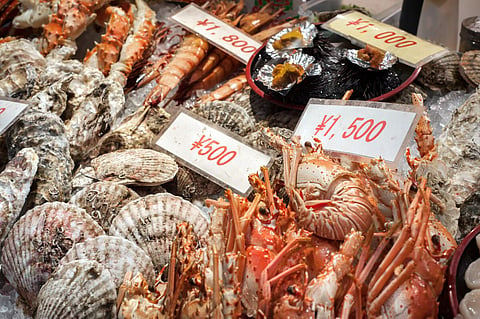

The Japanese food service industry has taken longer than other countries to improve and reestablish itself. The emergency declaration was not fully lifted until March 2022.
In addition, the recovery temporarily slowed down because of the rapid spread of the Omicron variant in July. Further, the conflict between Russia and Ukraine caused inflationary pressure, the depreciation of the Japanese yen, and increased resource prices.
On the bright side, earnings coming from Europe and North America convey better impressions when translated into the Japanese currency. For these reasons, main Japanese companies have been forced to revise their consolidated earnings forecast for the fiscal year ending March 2023.
Maruha Nichiro has reported that the Processed Foods Business Unit and Foodstuff Distribution Business Unit suffered a decrease in operating income. The main reasons for this were soaring raw material and energy costs. Also, an increase in procurement costs was caused by the rapid depreciation of the yen that we already mentioned.
Contrary, pet foods and marine products sales in Europe and North America were strong. Moreover, marine products sales were high. Also, the Aquaculture Business Unit reported higher operating income due to increased sales of tuna and yellowtail and rising market prices. The company confirmed this resulted in a significant increase in overall Group operating income.
Besides, Maruha Nichiro expects more challenging times from now on. The high costs trend and yen depreciation will continue. So, customers will think twice at the time of buying and consuming.
Finally, it has reported a partnership between Atland Corporation and Mitsubishi Corporation for the construction of a land-based production of salmon. It will be established in Nyuzen-cho of Toyama prefecture around October 2022 with a capacity of 2,500 tons. The aim is to start operations in 2025 and complete the first shipment in 2027.
"Based on the exchange rate of 145 yen/USD, we are planning to revise the selling price at the beginning of next year. If we do not suffer from cost increases caused by more yen depreciation next year, we will improve profitability. Decreasing stock-keeping units (SKU) is an additional cost-cutting measure. Although the sales temporarily decline after the price rise, we think that the sales will recover within some months," Tokyo-based Nissui says.
However, the company considers that the fish market price will not fluctuate significantly unless the exchange rate moves. It will keep an eye on seafood demand fluctuations though. "In the food business, if the yen depreciation goes forward more than expected, we might need to implement price increases and changes in weight per package," it advises.
Therefore, the consolidated financial results through the second quarter of 2022 were as follows: net sales were 377,207 million yen, up 37,595 million yen year-on-year; operating profit was 13,332 million yen, down 533 million yen year-on-year; ordinary profit was 14,716 million yen, down 1,445 million yen year-on-year.
Lastly, income increased thanks to Nissui Pharmaceutical Co., Ltd. sales, one of the subsidiaries of our group companies. The profit attributable to the owners of parent company was 11,747 million yen, up 340 million yen year-on-year.
"The outlook is still unclear due to concerns of an economic slowdown because of the rate increase in Europe and the U.S. and accelerated Japanese yen depreciation," the Group concludes.
